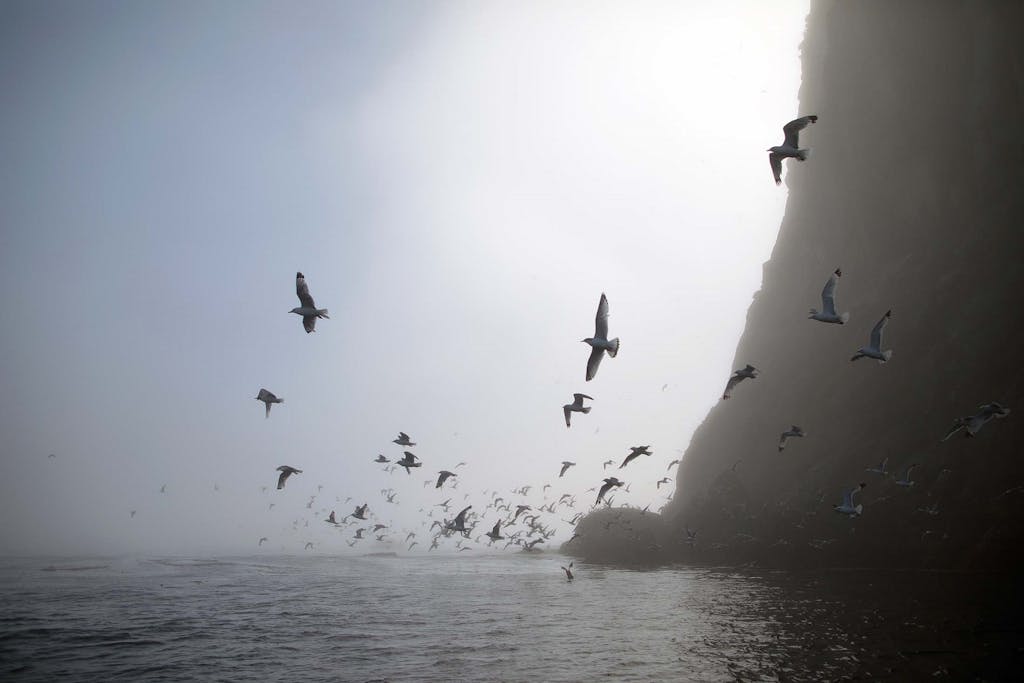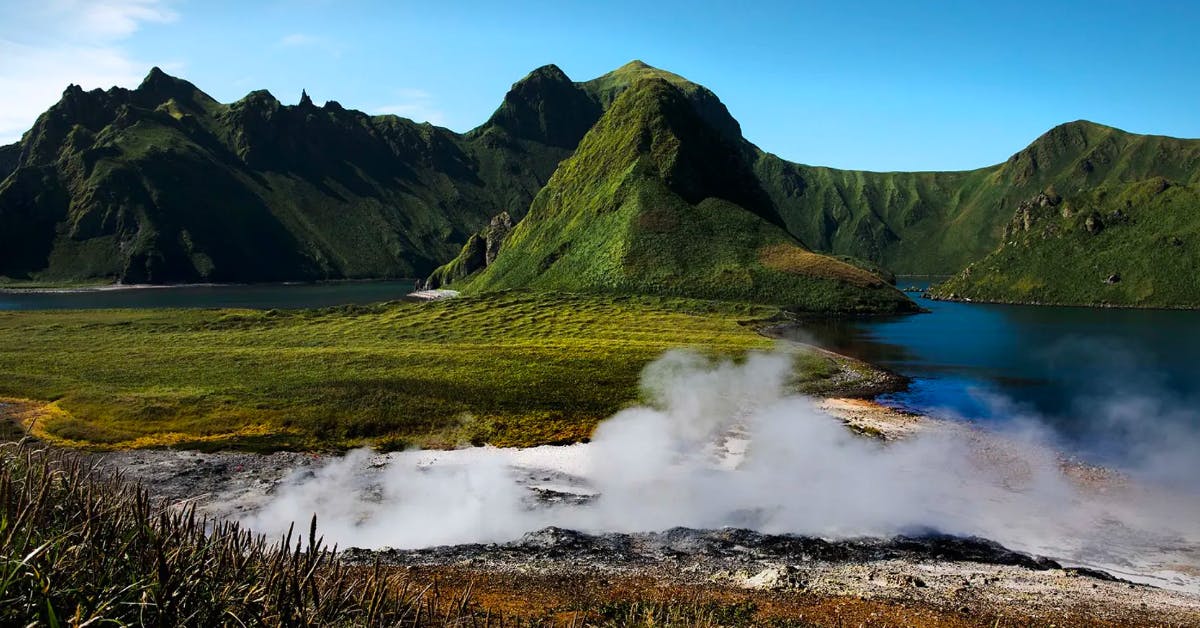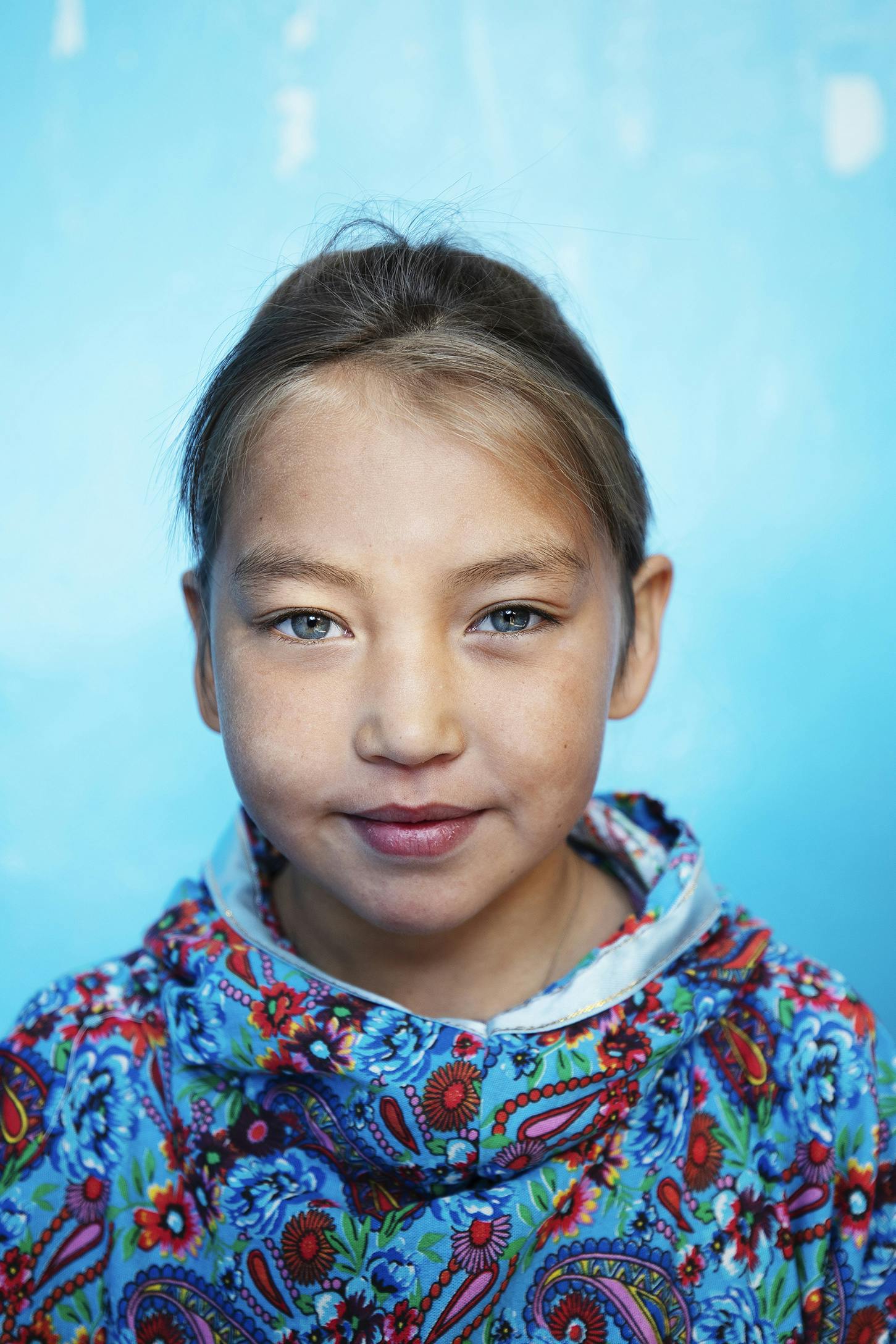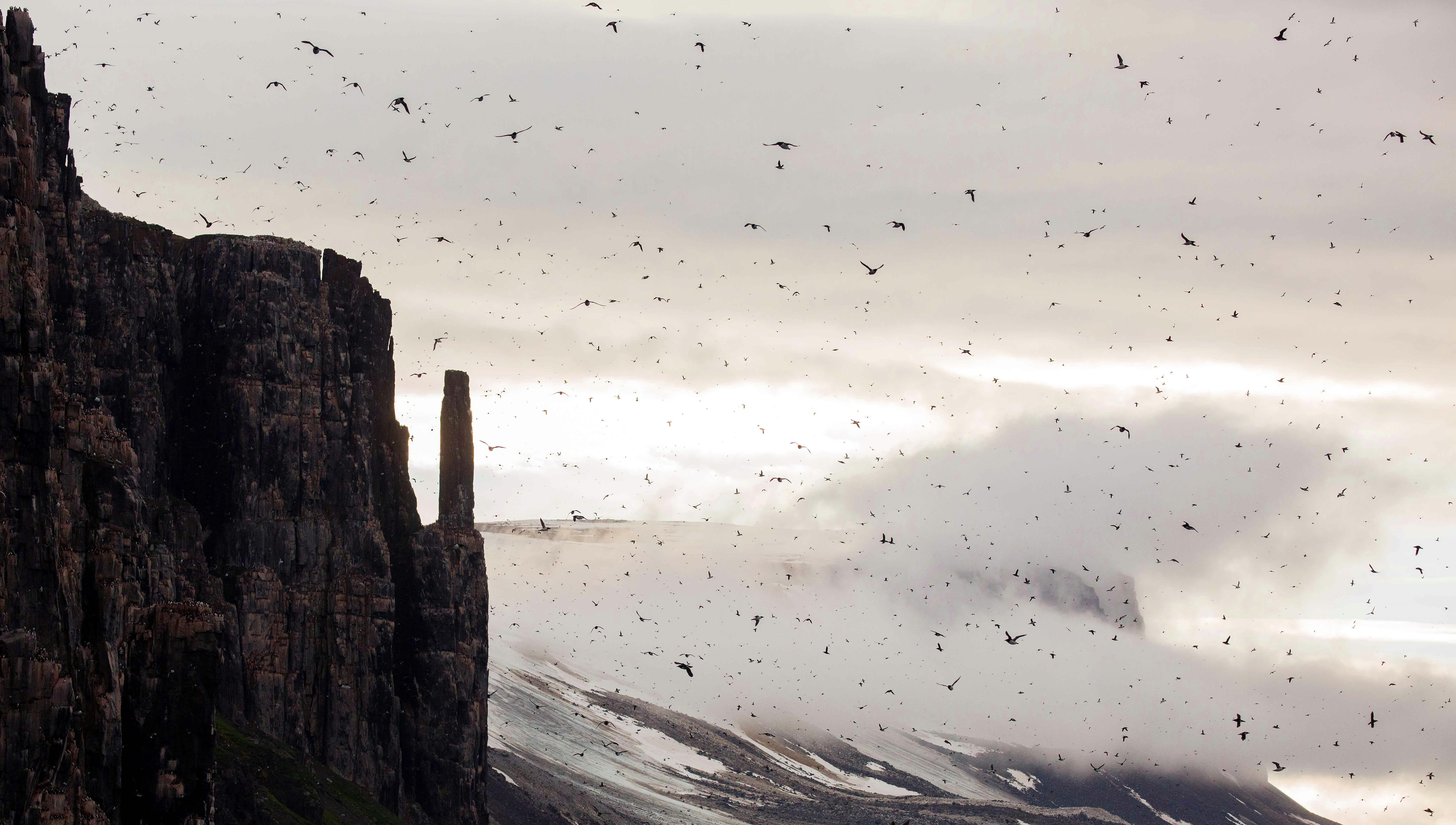Tiny Yankicha Island in the Russian Far East Is Startlingly Beautiful
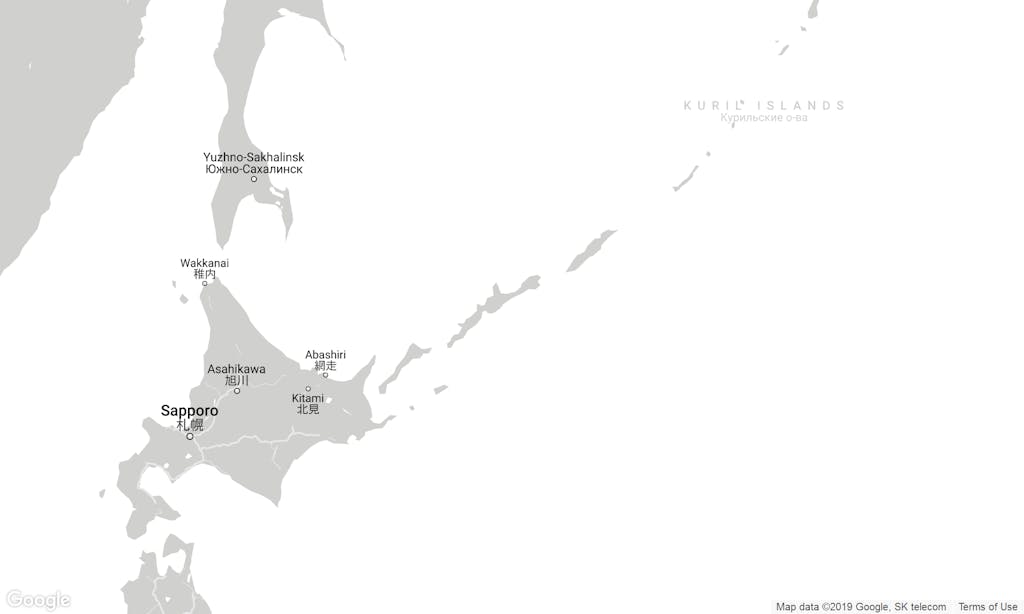
Upon entering Yankicha Island’s Crater Bay by Zodiac while on a Russian Far East cruise, you encounter a peaceful and ethereal land. Birds fly overhead and mischievous arctic foxes roam lush, emerald-hued slopes—the remnants of a devastating volcanic explosion that occurred about 10,000 years ago.
If you climb these hills, the view of Yankicha’s caldera and the inner isles that stick out of the bay becomes more stunning as you ascend. The waves that crash off the rugged Yankicha coastline contrast dramatically with the serene calm and beauty of the island’s inner bay. “It was a steep climb up, but we were rewarded with incredible views,” recalls Silversea guest Rowan Stephens. “The descent was basically like a playground slide; I just slid down all the way back – it was great fun.”

Caught Between Russia and Japan
Surrounded by the Pacific Ocean and the Sea of Okhotsk—which washes the shores of Sakhalin, the Kamchatka Peninsula and the Japanese island of Hokkaido—tiny Yankicha is an uninhabited island that’s just 1.25 miles (2 kilometers) in diameter. The Ainu people, an indigenous tribe with roots in both Russia and Japan, considered Yankicha a sacred place and used it for shamanic purposes. The summertime mist that cloaks the island imparts a mystical quality. “We initially arrived with the sea fog shrouding the island, but in dazzling sunshine,” recalls Stephens. “The mist moved around through the day, giving an ethereal atmosphere and adding to the sheer wonder and magnificence of the place.”
Yankicha is part of the larger volcanic Ushishir Island in the Kuril Islands archipelago, located in the Russian Far East—roughly halfway between mainland Russia and Japan in the Northwest Pacific Ocean. The Kuril Islands have a turbulent past, as they have belonged to Japan and Russia at different times in history. But they’ve remained under Russian control ever since Soviet forces captured them following Japan’s defeat during World War II. Japan still lays claim to them today, making the dispute over this archipelago one of the longest-running unresolved international conflicts in the world.
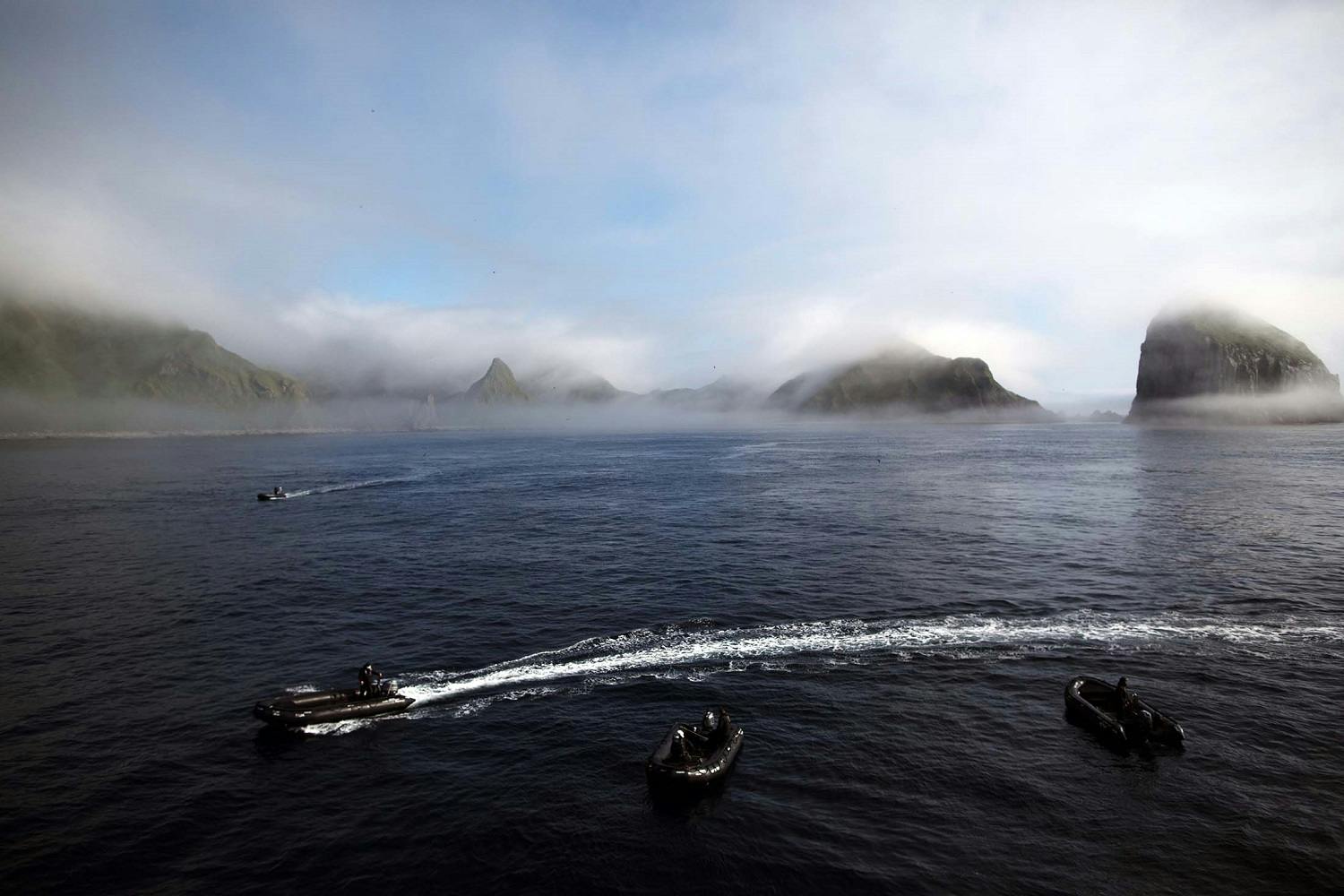
An Unforgettable and Natural Hot Spring Bath Experience
Yankicha might be small, but it’s impossible to get bored while ashore. One highlight is the natural hot springs that dot the island. The last volcanic eruption on Yankicha took place in 1884; however, underwater volcanic activity is still very much present, as is evident from the fumaroles and hot springs that have fascinated everyone who has ever set foot on the island, from the ancient Ainu people to contemporary explorers. The island’s name of Ushishir actually derives from “hot spring” in the language of the Ainu people.
These natural hot spring baths provide for a spectacular spa experience in one of the most remote corners of the world. Stephens has fond memories of her hot bath experience in a chilly 46 degrees Fahrenheit (8 degrees Celsius) spell of weather. “We hopped into the pool just off the fumarole area, which the Expedition Team had dug earlier, and they brought all sorts of drinks, including hot drinks, ashore as well,” recalls Stephens. “It was lovely to plunge into the hot spring and sip Monopole champagne in the water.”

Ushishir Island’s marine cave, nicknamed the “Emerald Grotto” by Russian explorers, is also extraordinary, and if you catch it in good weather, the colors of the shimmering waters will come alive. “We saw mesmerizing algae of reds, browns and greens,” says Stephens. “Golden thick ribbon ropes of kelp swayed in the tides, and seabirds cascaded off their perches as we explored in the Zodiacs.” The cacophony of birds’ cries fills the grotto. They circle magnificent jagged basalt columns that are so uniform they almost look man-made.
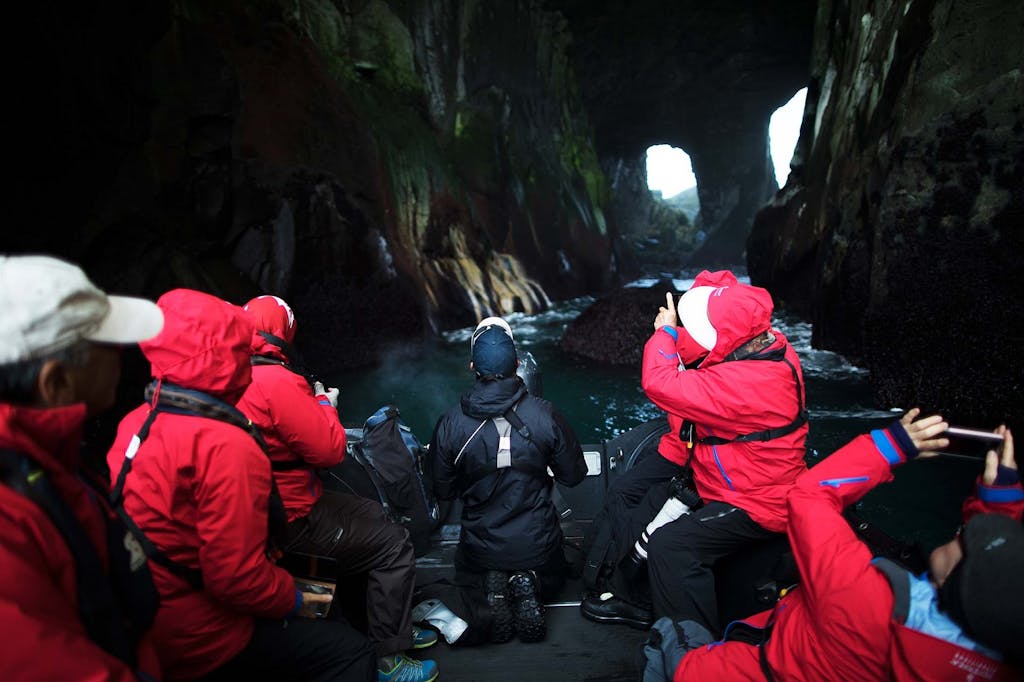
Abundant Wildlife Thrives on Tiny Yankicha Island
The arctic foxes on Yankicha Island are cute, playful, curious, and since they have no natural enemies on the island, utterly unafraid of humans. When they see guests approaching on a Zodiac craft, they won’t run away and might even gladly pose for pictures. Outside the caldera, sea lions and seals can be spotted on the basalt rocks or swimming among the kelp, popping their heads up and down in the water. Their dark brown coats blend in seamlessly with their surroundings, but you’ll still be able to spot them, despite their excellent “camouflage.”
The island is also a bird watcher’s paradise, as quite a few species, including the rare and secretive Whiskered Auklet, claim Yankicha—and the Ushishir Archipelago—as their home base. Fulmars, kittiwakes, and Crested Auklets can be seen diving into the sea, where they can stay for up to four minutes hunting for lunch, while Arctic Warblers, Middendorff’s Grasshopper Warblers and more are easily spotted feeding on land.
“I think the most impressive aspect was that we were witnessing a truly remote part of our planet with wildlife that was so abundant,” says Stephens. Yankicha Island was once off limits to foreigners and even to most Soviet citizens, but fortunately, those days are gone. This breathtaking place is now more accessible than ever to travelers from all over the world—weather depending, of course.
Learn more about volcanoes in the Russian Far East.
